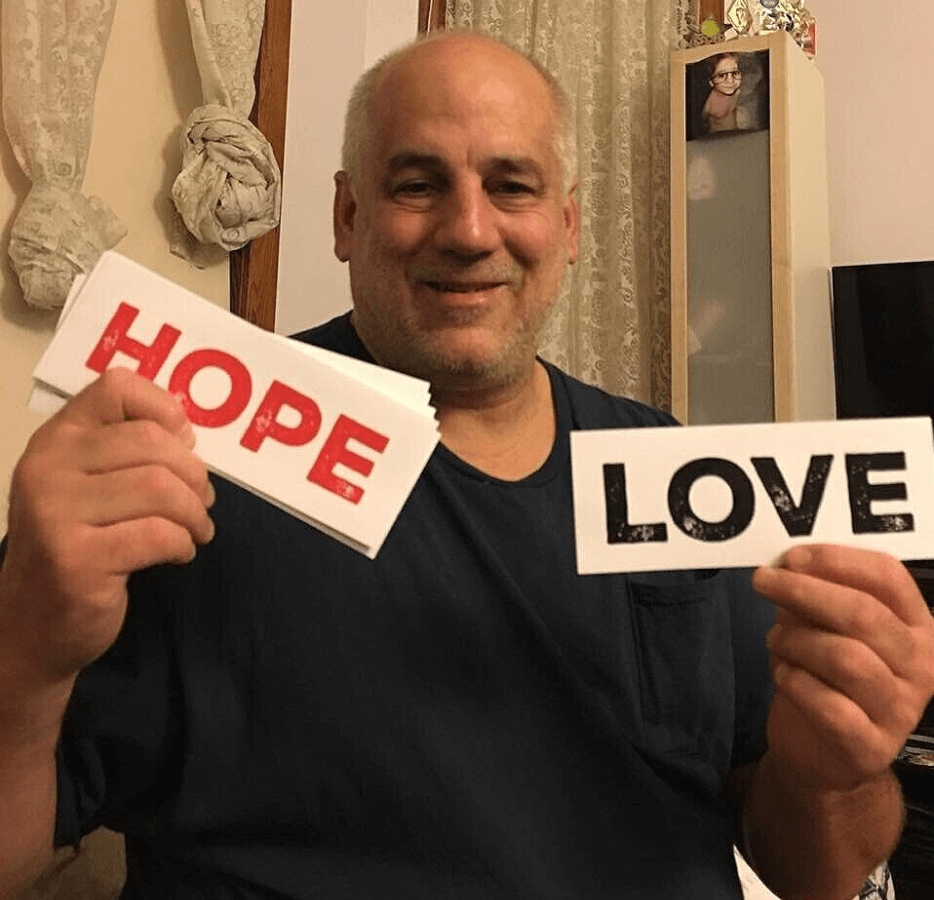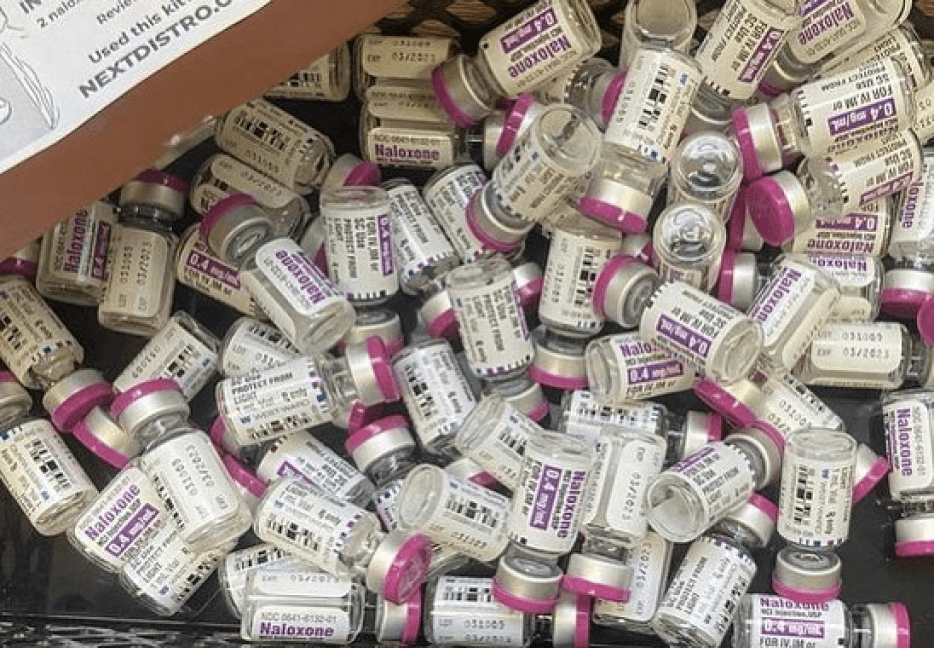The history of naloxone access in the United States
1971
Naloxone hydrochloride was created in 1961 by Jack Fishman and Mozes Lewenstein and approved by the FDA to treat opioid toxicity (“overdose”) by blocking the effects of opioids in the brain, restoring respiratory functioning and “reversing” an overdose.
1980s & 1990s
Instead of giving naloxone to the people who need it most - people who use drugs - it was used exclusively by emergency medical personnel and in hospital settings to reverse overdoses and to manage opioid-involved anesthesia. During this time, naloxone access remained non-existent, although there were whispers of small quantities being distributed quietly by sympathetic EMTs and paramedics who recognized that people who use drugs were witnessing the majority of overdoses, and that naloxone was extremely easy use.

Chicago Recovery Alliance Van (Scott Olson/Getty Images)
1996
25 years after the approval of naloxone, the Chicago Recovery Alliance (CRA) lost a co-founder and beloved colleague John Szyler to overdose and decided something more needed to be done. Under the leadership of Dan Bigg, co-founder and director of CRA, and Dr. Sarz Maxwell, they made the decision to start distributing naloxone to the people who used syringe services.
For CRA, this act was based on the recognition of several important concepts:
- People who use drugs are the primary witnesses to overdoses
- People who use drugs have many legitimate reasons to not engage EMS/911 and in fact did so very infrequently
- People who use drugs already employed a whole array of creative methods of reviving their peers that had been passed down through many generations via word of mouth
- There was an easy to use, very safe, and extremely inexpensive “pure antidote” to an opioid overdose
CRA worked with Dr. Maxwell to order a supply of the drug and began giving it out and the world’s first coordinated naloxone distribution program was born. Almost immediately people returned to say that they had used the naloxone to revive a friend, peer, partner, stranger, roommate, neighbor, family member.
Today: Building power with our people
As we look back on the history of Harm Reduction in the United States and internationally, this was a pivotal moment that has changed the way we think about overdose. This revolutionary act by CRA has sparked a movement that is now more than two decades old, one that has increasingly been absorbed into mainstream public health, health care, and even the criminal justice system.
We now have many years of public health evidence proving naloxone distribution to people who witness overdoses means people survive.
We also have evidence of a different, more meaningful kind: hundreds of Harm Reduction programs across the US are practicing radical, unconditional love every day and power is being built up among people to take control of their own lives.

CRA’s actions pre-date any naloxone access laws, endorsement or political support, or funding from the public health establishment. Buttressed by an ethical imperative, they operated without any litigious concern for liability.
It was an act of defiance to liberate naloxone from its historical medical placement, a power shift, and an embodiment of the belief that people who use drugs have the right to their own life and survival.

The work continues
On April 5, 2018, the US Surgeon General Jerome Adams made a widely publicized statement on naloxone (emphasis ours):
“In most states, people who are or who know someone at risk for opioid overdose can go to a pharmacy or community-based program, to get trained on naloxone administration, and receive naloxone by “standing order,” i.e., without a patient-specific prescription. Naloxone is increasingly being used by police officers, emergency medical technicians, and non-emergency first responders to reverse opioid overdoses. There are two FDA-approved naloxone products for community use that are available by prescription, but too few community members are aware of the important role they can play to save lives.”
Many viewed Dr. Adams’ statement as an emphatic endorsement of naloxone. However, it contains several misleading statements that highlight barriers we are still facing today. We’re going to break down this statement as a case study showing how the medical, public health and criminal legal systems have changed the narrative about naloxone:
When an emergency department gave a prescription for naloxone, less than 20% actually visited a pharmacy and were able to obtain naloxone.
Only 8% of all US counties had community-based naloxone programs and 13% of counties with the highest overdose mortality rates had these programs.
Naloxone must be accessible for people to use it
Dr. Adam’s statement gives the impression that naloxone is widely accessible in pharmacies or community-based programs. However, people in need of naloxone continue to face stigma in pharmacy settings. They are often rejected by uninformed pharmacists who do not know - and do not believe - they can give naloxone without an individual prescription. Additionally, folks often face high co-pays and insurance barriers.
Programs are not nearly as prevalent as the statement suggests. The programs that do exist face massive funding barriers because there is no financial support at their local, state, or federal levels. Instead, they rely on donations and small grants.
90% of overdose reversals are done by people who use drugs.
First responders are people who use drugs
The statement mentions “police officers, emergency medical technicians, and non-emergency first responders”, yet fails to directly mention the tens of thousands of overdoses that are reversed by people who use drugs and their community every day in the US.
Injectable naloxone is 30x cheaper than branded nasal Narcan.
Generic naloxone is more accessible and just as effective
In the statement, Dr. Adams says “two FDA-approved naloxone products for community use” which refers to Evzio® and Narcan®, two branded naloxone products. It fails to mention a third: generic injectable naloxone.
This has led state agencies to believe that Evzio® and Narcan® are the only acceptable naloxone products for community use and that injectable naloxone is inappropriate, dangerous and an undesirable option for community use (see NIDA’s page on naloxone for an example of multiple incorrect statements).
This becomes especially problematic when we look at the influx of federal dollars to address the “opioid epidemic,”* There is more funding but it is being used to purchase nasal Narcan® for the whopping community price of $75 per two-dose box. Meanwhile, generic injectable naloxone is more widely circulated in the community and costs just $X.
*(We object to the term “opioid epidemic” for many reasons. To learn why, check out Carl Hart’s Vice piece.)

Photo of Dan by Holly Bradford
The result
Today, many harm reduction programs - including those led by people who use drugs - are excluded from accessing federal funds or supplies of naloxone. Community-based programs receive regular reports of naloxone kits purchased with this first wave of funding sitting on shelves expiring, in many cases having been distributed to agencies and community members unlikely to have the opportunity to use them.
It is important to identify this type of misleading message because of the ways that they contribute to the dangerous diversion of resources away from the most effective life-saving models for community-based naloxone distribution, based on years of evidence: ample naloxone distribution targeted directly to people who use drugs.
We must learn from these mistakes and make certain that funding and naloxone product is channeled into the hands of organizations and individuals who are using naloxone to save lives daily.
That’s why Remedy Alliance/For The People exists. We’re ensuring harm reduction programs have sustainable and equitable access to low-cost, low-dose naloxone for distribution in their communities.

Photo of generic injectable naloxone (photo from Remedy Alliance / For The People instagram)
Bring naloxone to your program
Apply now
Artwork by Mx Leeway @leewaycat
